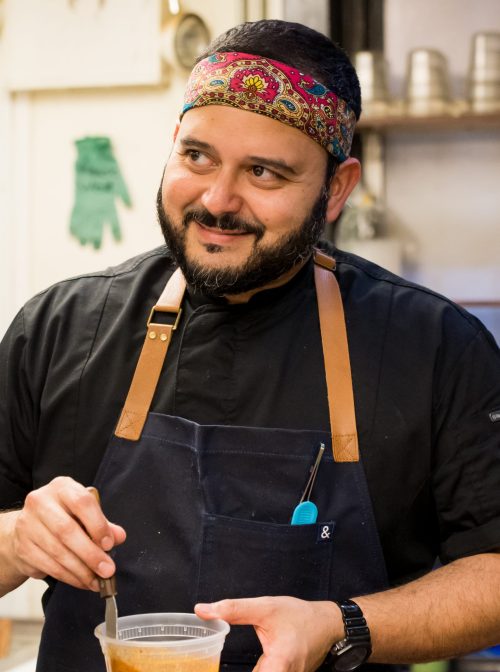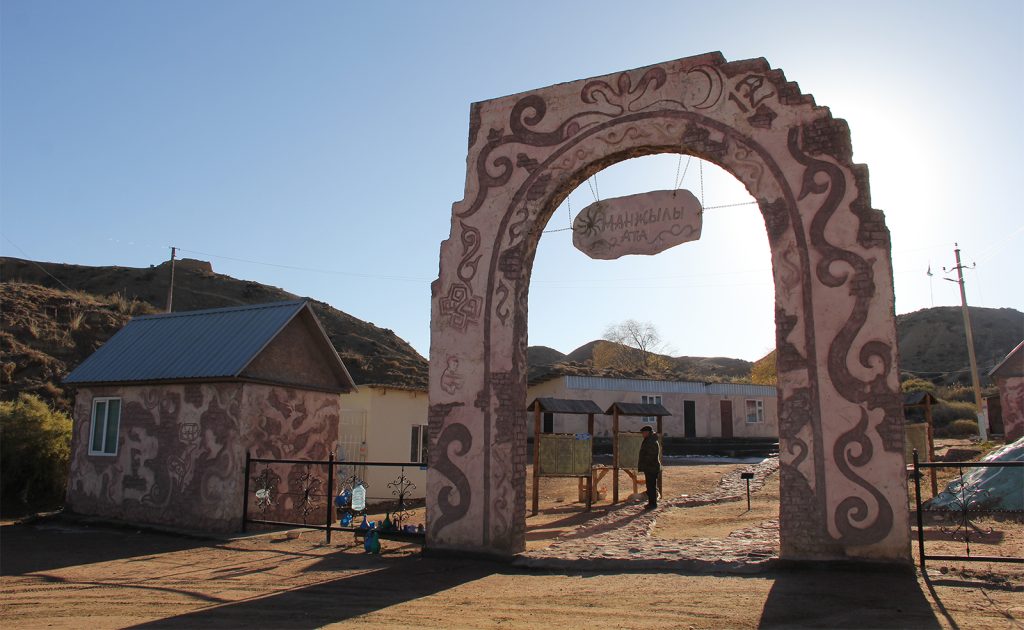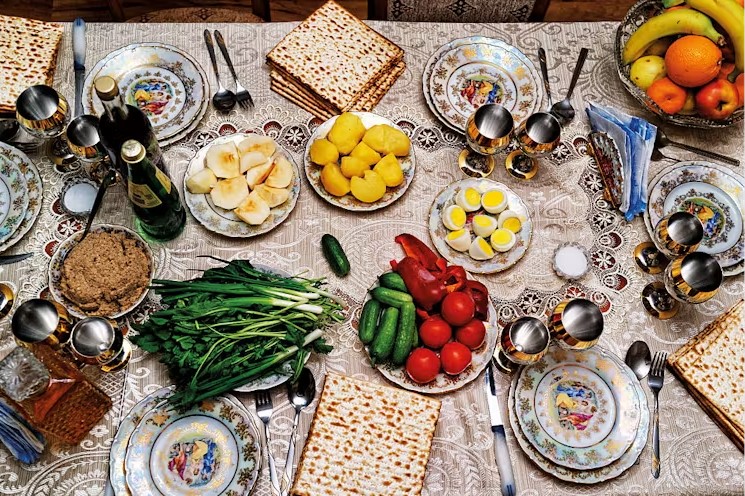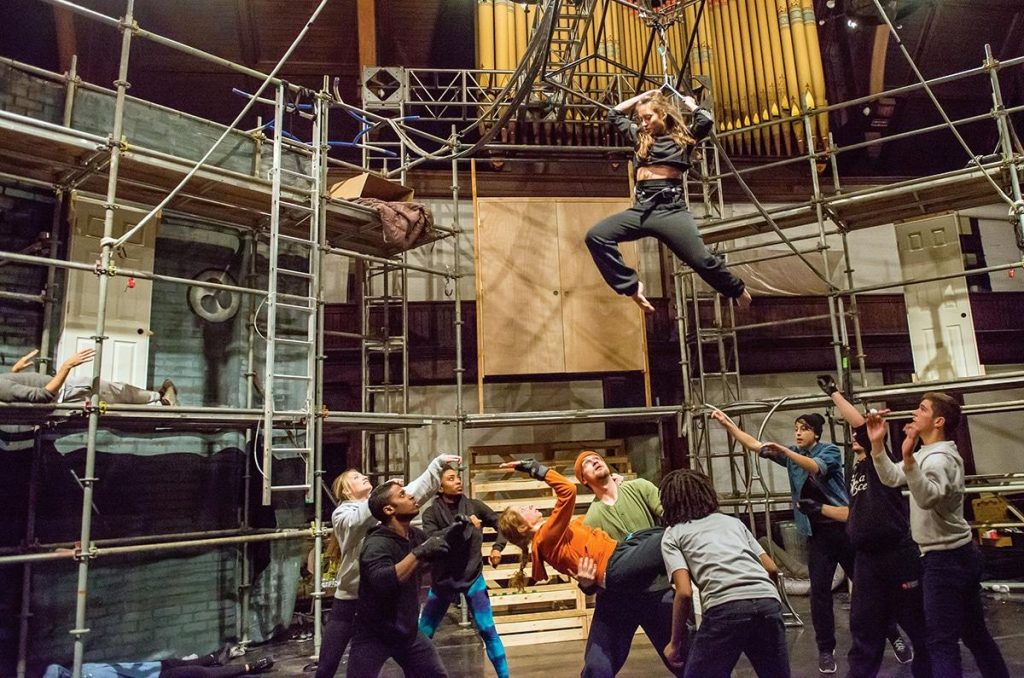Chef Zubair Mohajir is on a bit of a run for well-deserved accolades.
In recent months, he received nominations for a James Beard award and last year, a Jean Banchet Rising Chef of the Year nomination. His food is good and thoughtful. A complex series of flavors that rely on a reservoir of his family’s history and his Indian heritage; pulling from an array of seasonings and techniques he picked up in kitchens around the globe. In this way, Mohajir reminds me of a talented hip-hop producer sampling from the world’s palate until the piquancy is on point.
At Wazwan, Mohajir’s restaurant at 1742 W. Division St. in Wicker Park in Chicago, the Vada Pav is potato croquette sliders with a perfectly subtle cumin flavor topped with a sesame tomatillo salsa served on a brioche bun fluffier than any Chicago-style high-end burger joint. The THC Sando, the chicken sandwich that helped put the chef on the culinary map, is the epitome of globalized street food where perfectly fried and juicy tandoori honey chicken and Korean spiced aioli combine for something reminiscent of soul food from the American South. And speaking of soul food, the Mushroom Korma is a vegan dish that is as comforting as my mom’s matzo ball soup, but whose flavor profile is luscious and covered in black truffle.
There are two concepts operating out of Wazwan. In front is an à la carte street style casual menu and at the back in an enchanted one-hundred-year-old coach house, Mohajir prepares a refined and highly curated multi-course tasting menu. Each menu changes frequently as Mohajir continues creating and “getting bored” from repeatedly serving the same idea. It usually takes him a month to refine and perfect a recipe. Once he feels a certain level of mastery over the dish, he will dig into old notebooks and cookbooks and interview his relatives to create inspiration for new dishes. He enjoys challenging himself and pushing himself to grow creatively.
Which makes sense because his path to becoming a chef and restaurateur has been far from an easy or traditional one. He did not always have his sights on setting a table for people to gather and eat award-winning dishes. Mohajir was laid off from a comfortable job in the financial sector over seven years ago and reckoned his own heart and path. He was admittedly miserable in that line of work.
One night in June as Mohajir prepped the night’s tasting menu, we chatted about faith, revitalization and the well-spring of inspiration that pushed him in his quest for community and excellence.
I began by asking him about the crossroads and conversation he had with-his-then-recently married wife about making the hard leap of faith to switch career paths a few months into their marriage.
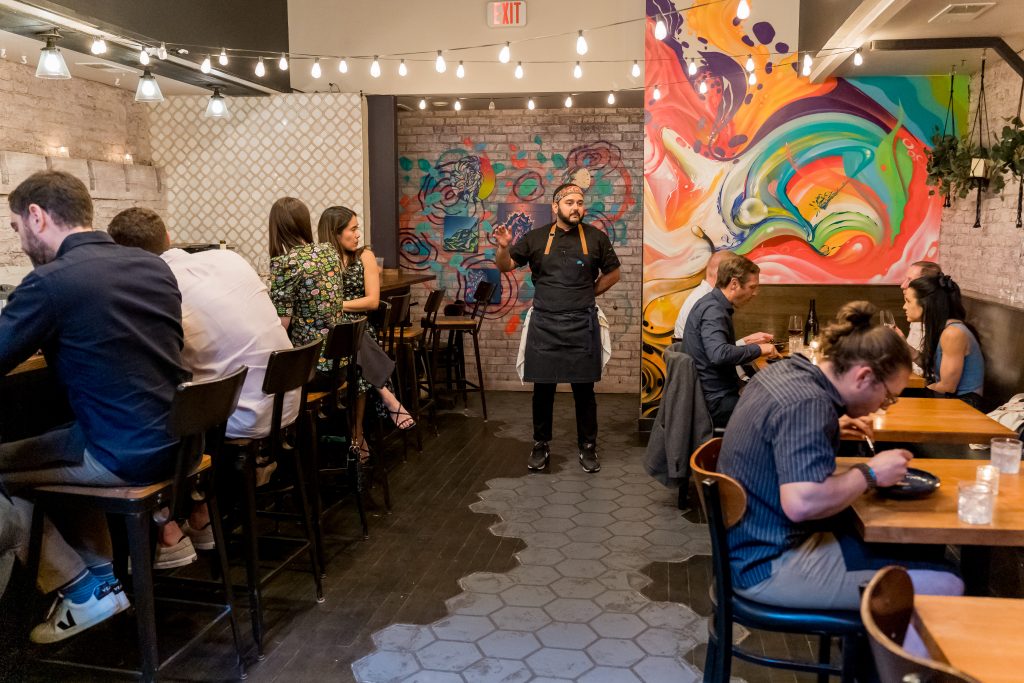
Chef Mohajir: When I got laid off, I began having urges of being in a kitchen. It just pulled at me. I ordered the Le Cordon Bleu culinary school application like five times and threw it in the garbage because I’m just like, “You’re not about to go back to school and do this again.” I hated school so much my whole life. Going back to school for anything was a big no for me. But eventually, I did face the situation and decided to start anew. I would wake up at five am. Go to Le Cordon Bleu from six to nine a.m., and then to my day job. I would get off work and then work at a bar to get some kitchen experience. It was five a.m. to midnight kind of day, day after day. I was freshly married. My wife was like, “What the hell’s going on? I married a guy in a suit who is now thinking about getting paid eleven dollars an hour.” It just did not make sense. So, after two months of being at Le Cordon Bleu, I met a woman who said casually after class one day that I should go work at a restaurant. And I am like, “Yeah, why didn’t I think of that?”
Before he was a chef, Mohajir became a student, paying his dues, starting at the lowest levels in the restaurant business. He took a stash (pronounced “staahj”), a three-day unpaid internship at Alinea, Chicago’s three Michelin star restaurant ran by chef Grant Achatz.
Chef Mohajir: Those three days were like the craziest three days of my whole life at that point. I was 28 years old, and I had never experienced anything like that. What we do now, we did at about one hundred and fifty miles per hour then. From the second you walk in, it feels like you are walking casually and everybody else is flying by you. The sequence of peeling something, cooking it, resting it, it was a sensory overload. It felt like I had taken a drug because it was addictive at that moment. Those three days were hard, but it installed a motor that still runs today. It instilled in me a sense of urgency.
Mohajir then took a paid job at another Chicago institution, The Pump Room, for a couple of years initially “mainlining like 50 pounds of baby Brussel sprouts every day, tearing up fingers, breaking yourself in” to working his way up to sous-chef within two years and managing their two million dollars’ worth of banquet business.
His desire to continue to learn pushed him to stash again, this time at internationally renowned restaurants in California, including working for chef Thomas Keller. It was there in the alley-less sunshine, being close to the land and vegetation, where another insight into the kind of chef he hoped to become emerged.
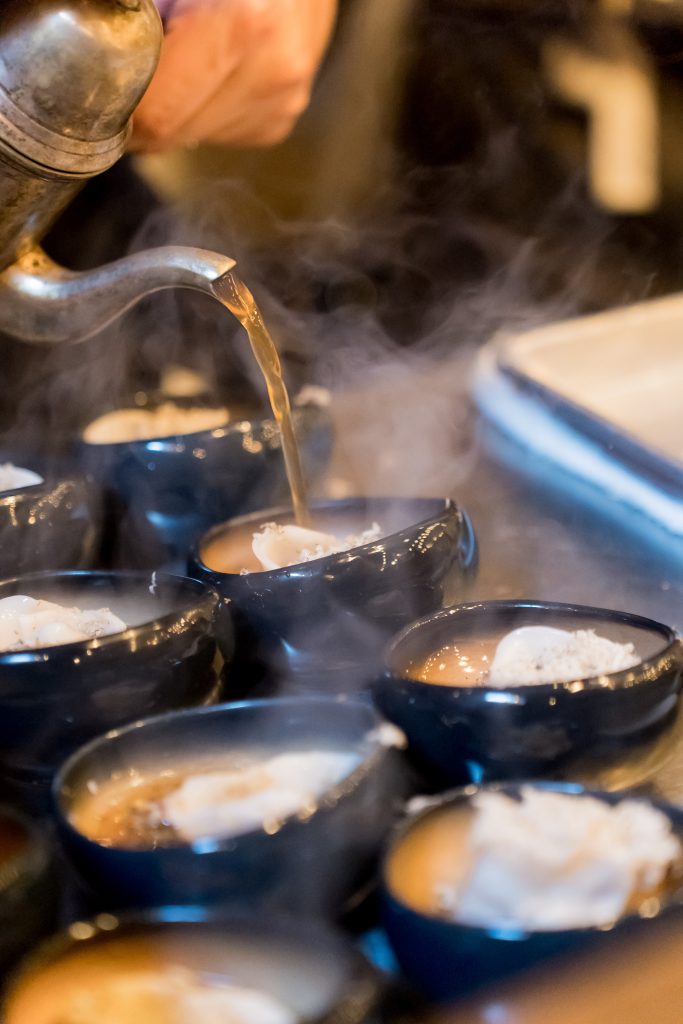
Chef Mohajir: On my first day the chef was like, “Go get some rosemary” and I was in the walk-in fridge for 10 minutes looking for rosemary. You never come back to the chef empty-handed. It shows that you do not have any eyes. But I went back to my chef and said, “I don’t see any rosemary.” He was like, ‘Go outside!” So, I went outside, and every tree had a rosemary bush underneath it. The Chef de partie (a station chef) walked around the restaurant building a bouquet from all the flowers and herbs that are just naturally growing around. We don’t do things like that in Chicago. After you’ve settled in, they challenge you even more. You have an hour and a half to produce a special for that night’s dinner. That unlocked things for me because before that, cooks are just told what to do. Cooks are just following recipes their whole life. They’re cooking, but they’re not cooking. They’re not feeling, they’re not tasting along the way. The first Michelin-star restaurant I worked at was the one with no recipe books. That experience unlocked an unknown part of my brain.
From here, Chef Mohajir went global, working at Michelin restaurants in Bangkok. While he was working there, he watched the episodic Netflix cooking show, “Chef’s Table,” and was struck with the inspiration to return, back toward his own tradition to learn and rediscover and elevate the Indian food he grew up with.
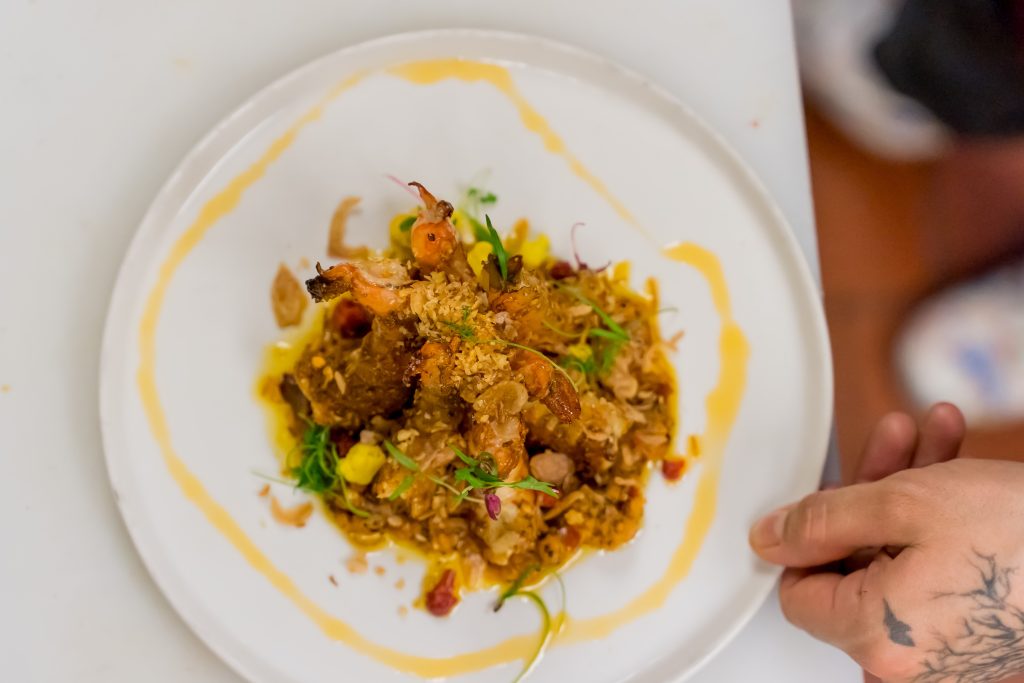
Chef Mohajir: I was just starting to look inside more, into my own heritage, because it’s a classic thing about being Indian. We don’t give ourselves, or our food, enough credit. Or that’s how it’s been before. We always go cook Italian food, we’re cooking French food, we’re cooking American contemporary food, or whatever it is. But for me, it was the realization that our grandmothers and moms are as baffled, as stubborn, and as talented as any French chef out there. Realizing that, I began looking inside the culinary traditions of South Asia.
Wazwan is a culinary tradition from Kashmir, where in one seating, you get thirty-six courses over a three-hour period. Reading about that cadence, then reading more into the history, you realize that modern day fine dining, the tasting menu, doesn’t come from France. It comes from South Asian spice traders and from strangers all the way from Japan, bringing the etiquette of food to the Middle East and the etiquette of eating food to Europe. That gave birth to what we do now. That’s why I started Wazwan.
Wazwan also means cooking shop in Kashmiri and Mohajir started feeding people in underground dinner parties in apartments around Chicago. The number of guests at these parties grew. His cuisine began fusing the palates he learned from while actively seeking inspiration from his life and traditions. He began asking aunties and uncles for their food memories and began incorporating his original inspiration, his family, into his food.
Chef Mohajir: Our family is obsessed with food. If we’re eating breakfast, we’re already talking about what we’re going to eat for lunch. At the breakfast table, there is usually a spread for like thirty people. My mother never really worked before we moved to Chicago in 1987. Her first job was at Burger King. She hated Burger King so much. We never ate at fast-food restaurants ever again. But she’s always been a superb cook. She started cooking from the house. And in the South Asian community, there are many people, like doctors, who don’t cook or can’t cook or don’t have the time to cook.
So, she ends up starting a kind of catering business on the side. On Saturday mornings, it’s a full family affair. Dad is in the corner chopping onions and frying samosa. My sister is making some sort of dessert. And I was always in there. Cooking has always been a way to hash out arguments. Cooking was a way of working through our issues together. You know, it’s classic Desi stuff where we don’t really talk about anything, but we cook together and therefore are good now.
In restaurants around the city, there are few Muslim chefs who receive the kind of recognition Mohajir is starting to garner. We talked about the conflicting worlds he finds himself in, trying to navigate family, faith, and success in an industry that is all-consuming while walking the line between halal and haram.
Chef Mohajir: It’s a very tough world. I’m not the most perfect Muslim. We all do many things. But that’s been the fight, to be a Muslim in the restaurant industry. You’re surrounded by all the vices and all the demons and working through that is a never-ending thing. But I would say it’s been the best thing possible. I always stuck out because during Ramadan, they’re all confused about why I’m not eating, or how I’m surviving on a hotline. I would have these pans full of ice with soaking towels because I was working on the French top. That’s a thousand degrees in front of me. And during Ramadan, I would still work and just rotate these towels around my neck. Your body is so hot that these towels just steam. The guys thought I was weird in the beginning. But when they see that happening for thirty days straight, they’re like, “Yo, this guy is a beast.” I think there’s an opportunity to prove yourself and show the strength we have as Muslims, even if we’re not perfect. Just the fact that we can keep going and strive to be better Muslims. It’s been a defining thing for me, for sure.
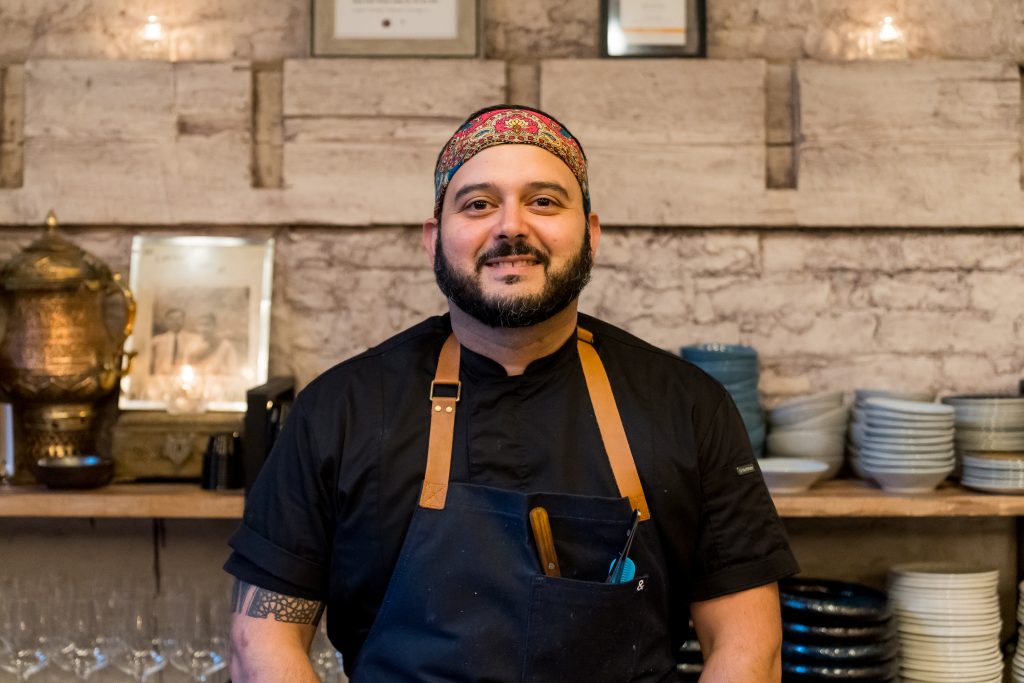
How you carry yourself, your character, is what defines you. On a true level. Your character is your character before anything else.
One day I looked up, it was sunset, and some servers dropped off two quarts of coffee. Other servers dropped off snacks for me and that’s when you know you’re influencing people. Because now they know when your Iftar time is. That is a very humbling and touching moment for me because these are not Muslims. My community would judge them for being horrible people because they get drunk, and they do drugs, and they do whatever. But we’re all people, man. We all got problems. We all got our demons. But for them to even recognize that I was fasting and just show up one day. That’s where I realized how you carry yourself, your character, is what defines you. On a true level. Your character is your character before anything else.
The kitchen at Wazwan is multi-faith and multiethnic. Mohajir’s sous-chef is Filipino, and his line cooks are Mexican. Each one contributes their inherited and learned flavor profiles that result in a cosmopolitan Indian cuisine that is not fusion in the traditional sense but more a diasporic gumbo that reads Indian but has clear echoes and antecedents that are intercontinental.
Chef Mohajir: What we’re trying to do at our very core is that we, and we don’t have anything against the butter chicken world, but we go in the opposite direction of the butter chicken world because butter chicken has become the symbol of Indian food. But India is thousands of years old, before there were Muslims or Hindus, or anybody there. In India, every state’s food is different. Every North Indian, middle Indian, and South Indian food is vastly different. We decided to go east. We’re exploring the Indian contribution to the Southeast Asia panhandle, the reasons why Indonesia is the way it is, and Malaysia is the way it is, and Southern Bangkok and Southern Philippines. It’s all Indian immigration and trade. And all that has also permeated back to India as well. They have Khao soi (a coconut curry noodle soup) in India that’s Burmese. Thai-style, Asian Indian food comes from the back and forth that’s happened between India and the Southeast Asia panhandle.
So yeah, our crew is very, very multicultural. There are things you can find in the Philippines that relate back to what we’re trying to do. It’s funny because with some of the rest of the guys, they are Mexican. We always joke that the only difference between Mexicans and Indians is ginger. The flavor profile is very much the same. I mean, rotis are tortillas, man. It’s all the same. It’s always been the same. They have been influenced in the same way. We have just never been taught that. All those mosques (found in the Americas) came from the Western African influences that were in Latin America long before Columbus and the Spanish got lost. We’re all very much interconnected when it comes to food and you find that out when you’re cooking something and you will be like cassava is like a corn tortilla, just 10,000 miles apart.
